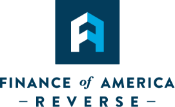When you retire, your sensitivity to market volatility increases dramatically. Instead of falling back on your paycheck when the market is down, now you have to ride it out and withdraw from your investment portfolio to cover living expenses. This can increase the risk of running out of money in retirement if the market is down for any period of time at the beginning of your retirement.
Sequence of Returns Risk in Retirement
Without a monthly paycheck coming from a job, retirees have to sell off investments to support their cash flow needs. If you are forced to cash out your investment holdings early in retirement when the market is down, your reduced number of shares left in your portfolio will not be enough to make up for the losses when the market eventually picks up. The risk associated with drawing funds from an investment portfolio during market downturns is called “Sequence of Returns Risk” in financial planning. Unfortunately market volatility associated with sequence of returns risk makes it unrealistic to plan for retirement using a simple, straight-forward rate of return. You can invest the same way in two different twenty-year periods and have drastically different results. Here is an example to help illustrate how sequence of returns risks affect portfolio value over time:
This illustration provides two market performance scenarios where the investor has $100,000 invested, with a 5% annual draw adjusted each year to accommodate inflation of 3.5% The first sequence shows the investor’s portfolio performance with a bull market early in retirement followed by a bear market, and the second scenario reverses the market performance order.
Market Performance Scenario #1 Sequence of Returns
Bull Market followed by a Bear Market 21%, 21%, 21%, 7%, 7%, 7%, 7%, -7%, -7%, -7%
- Result: If this Bull/Bear cycle is repeated, the retiree has investment gains after 20 years, with an ending account balance of $140,483.
Market Performance Scenario #2 Sequence of Returns
Bear Market / Bull Market 10 year Cycle -7%, -7%, -7%, 7%, 7%, 7%, 7%, 21%, 21%, 21%
- Result: If this Bear/Bull cycle is repeated, the retiree will run out of retirement funds in 19 years.
Even though the average market returns were the same (7% average over 10 years), the draws, combined with the sequence of those returns created different outcomes. This is also called “volatility drain”, when funds are being drawn from a depleted asset.
While you can’t control this risk specifically, you can control your behavior and flexibility when reacting to the market sequence of your returns. Instead of relying solely on your investment portfolio to fund your retirement living expenses, financial experts, such as Dr. John Salter, recommend considering accessing home equity as an addition to your investment strategy at the beginning of your retirement. He calls this strategy a “standby reverse mortgage.” Based on his calculations, Dr. Salter finds that this strategy dramatically improves portfolio survival rates because it reduces volatility drain. Dr. Salter goes on to propose that incorporating a standby reverse mortgage line of credit early in retirement can increase sustainable withdrawal rates from 3.15% to 6%1.
Paying Back Standby Credit After Bull Market Years
To further balance your debt-to-asset ratio, Dr. Salter suggests paying back portions of your loan after periods of bull market performance. Home-equity can be drawn from a non-cancelable line of credit, giving homeowners control over when, and how much, they draw. The line of credit can be a “standby” and can be paid back at any time with no prepayment penalty. Dr. Salter proposes that by properly borrowing, re-balancing, and repairing a Line of Credit, borrowers can increase the probability they will meet their spending needs and improve the sustainability of their withdrawal rate.
Home equity can be a vital element in financial planning to avoid sequence of returns risk in retirement.
With the built-in consumer safeguards and flexible options for accessing equity, reverse mortgages are transforming the way people approach retirement. With any financial decision, it is important to carefully consider your options. The right financial advisor can guide you to a great decision that works with your financial goals.
1Pfeiffer, Shaun, John Salter, and Harold Evensky. 2013 “Increasing the Sustainable Withdrawal Rate Using the Standby Reverse Mortgage.? Journal of Financial Planning 26(12): 55-62.
This article is intended for general informational and educational purposes only, and should not be construed as financial or tax advice. For more information about whether a reverse mortgage may be right for you, you should consult an independent financial advisor. For tax advice, please consult a tax professional.















I WANT TO KEEP UP TO DATE ON RETIREMENT TRENDS
Follow Us.